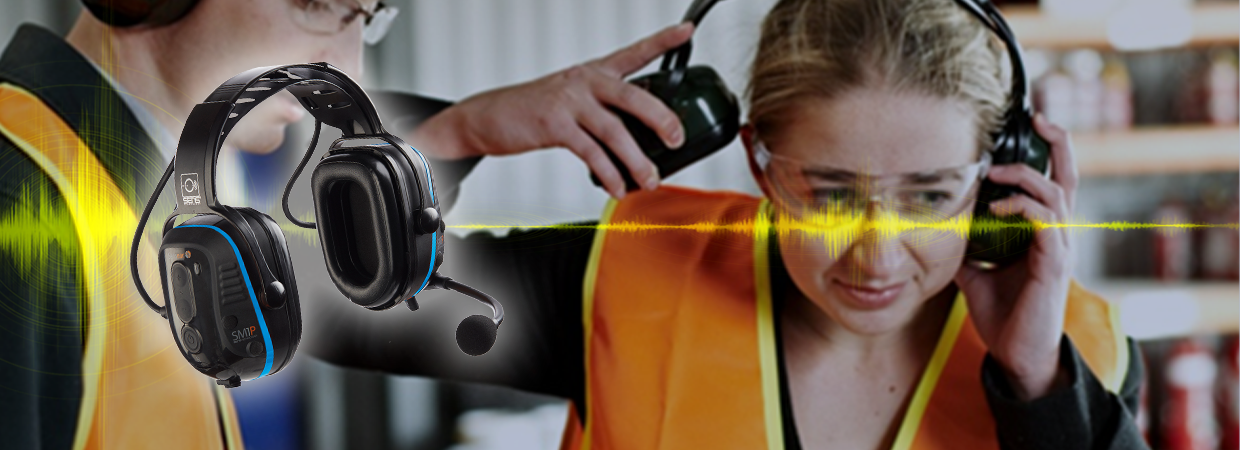- Home
- Blog
- High-Noise Workplace Safety
- Throat Microphones – Then and Now

A throat microphone, also known as a laryngophone, senses and absorbs audio vibrations from the user’s throat via a sensor that is worn against the neck.
Then -
 Throat microphones have been around for a long time. In 1934, famed aviator Wiley Post added a throat mic into the design of the world’s first practical pressure suit, so he could communicate with his crew during high altitude testing.
Throat microphones have been around for a long time. In 1934, famed aviator Wiley Post added a throat mic into the design of the world’s first practical pressure suit, so he could communicate with his crew during high altitude testing.
 German pilots and tank crews were the first to use the throat mic over the traditional speaking microphone during World War II. The German throat mic (L38114) consisted of two microphones attached by a leather-wrapped, magnetic sheet metal neck set that was not adjustable. This throat mic was able to pick up speech through vibration and be audible above engine and battle noises. This gave the German Army the tactical advantage of unobstructed communications with their pilots and tank crews.
German pilots and tank crews were the first to use the throat mic over the traditional speaking microphone during World War II. The German throat mic (L38114) consisted of two microphones attached by a leather-wrapped, magnetic sheet metal neck set that was not adjustable. This throat mic was able to pick up speech through vibration and be audible above engine and battle noises. This gave the German Army the tactical advantage of unobstructed communications with their pilots and tank crews.
 With the increasing need for combat and oxygen masks for higher altitude flights, Allied troops discovered soon after, the need for unobstructed, “hands-free” communication solutions. The most popular USAF throat mic was the T-30. This mic was strapped around the neck with two 1-inch round pickups contacting the throat near Adam’s apple, anchored by an elastic strap. These pickups transmitted sound vibrations as the wearer spoke, and allowed voices to be heard over the background tank and battle noises. They were reportedly quite uncomfortable to wear.
With the increasing need for combat and oxygen masks for higher altitude flights, Allied troops discovered soon after, the need for unobstructed, “hands-free” communication solutions. The most popular USAF throat mic was the T-30. This mic was strapped around the neck with two 1-inch round pickups contacting the throat near Adam’s apple, anchored by an elastic strap. These pickups transmitted sound vibrations as the wearer spoke, and allowed voices to be heard over the background tank and battle noises. They were reportedly quite uncomfortable to wear.
Now -
Throat microphones have continued to be improved upon, especially in the areas of comfort and transmission quality. Today’s military, law enforcement, and emergency personnel rely on throat microphones for unobstructed communication while wearing gas masks, HAZMAT suits, or in loud emergency situations. Throat microphones pick up vibrations, so the wearer can communicate in a low voice. For instance, Special Forces military teams can use throat microphones as a tactical advantage by being able to communicate without giving away their location.
Improved technology and compatibility with more devices have expanded the use of the throat microphone. Here are some of the additional uses for throat mics:
- Bouncers and security personnel - to improve communication in noisy crowd situations
- Music - for those of you old enough, remember Peter Frampton?
- Medical uses – swallow sound studies, sleep disorders, larynx dysfunction, speech studies, etc.
- Paint-ball and gaming – needs include direct communication in potentially noisy environments with the need for stealth
- Motorcycle and extreme sports enthusiasts - lack of interference from wind noise with the need for communication has caused this use case to gain traction in recent years
![The Sensear throat mic has many industrial uses]() Fracking Industry and other Industrial Uses
Fracking Industry and other Industrial Uses
 With changing safety regulations, respiratory equipment is becoming more of a requirement on job sites. Regular headsets or boom mics don’t fit the bill, as having a mask over the user’s mouth complicates communications. A throat microphone is a good communications option in these instances. The microphone is worn around the neck, so it will not interfere with the fit of the mask or its protection to the wearer.
With changing safety regulations, respiratory equipment is becoming more of a requirement on job sites. Regular headsets or boom mics don’t fit the bill, as having a mask over the user’s mouth complicates communications. A throat microphone is a good communications option in these instances. The microphone is worn around the neck, so it will not interfere with the fit of the mask or its protection to the wearer.
Benefits of throat mics in an industrial environment:
- Provide excellent communications in high noise environments
- Intrinsically safe
- Doesn’t obstruct respirators
- Connectivity with communications devices such as two-way radios
Do you think throat mics might work well in your environment? Contact Sensear today to discover how this technology might be put to work in your business.








